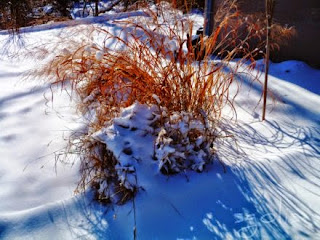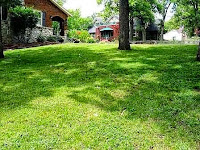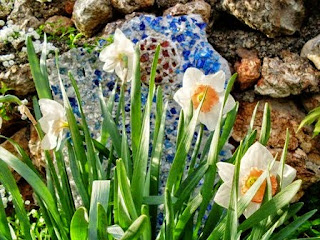If you reside in an
area that has severe winters; snow and ice then it is easy to miscalculate
where the gardens are especially if they are close to walkways, patios or driveways.
Take the necessary steps and prepare your gardens for snow and ice.
This will ensure that your spring flowers will be healthy.
 |
| Fountain grass adds winter interest to garden |
When I get my gardens ready for winter I
like to first survey my gardens to determine exactly what needs to be
done. I will make a list of all of the duties and then divide my yard into
sections.
Apply these steps to put your gardens to bed in the late fall and you will protect the perennials from ice that would damage the roots that are close to soil surface.
Start getting your gardens ready for snow and ice by cutting back flowers and plants to the soil line. If there are annuals dig out the roots. Followed by removing the grasses and weeds.
When the garden bed is clean and weed free cover the top of the garden with an inch of shredded newspaper, then add a layer of organic mulch; dried grass, pine needles, straw or leaf mulch, followed by two inches of manure or compost.
Next install reflective markers for all gardens that are located by patios, walkways, and driveway or door entrances. Or you can install 3 to 6 foot stakes at the edge of your garden closes to the high traffic areas. Top the wooden stakes yellow or orange flags.
.
Apply these steps to put your gardens to bed in the late fall and you will protect the perennials from ice that would damage the roots that are close to soil surface.
Start getting your gardens ready for snow and ice by cutting back flowers and plants to the soil line. If there are annuals dig out the roots. Followed by removing the grasses and weeds.
When the garden bed is clean and weed free cover the top of the garden with an inch of shredded newspaper, then add a layer of organic mulch; dried grass, pine needles, straw or leaf mulch, followed by two inches of manure or compost.
Next install reflective markers for all gardens that are located by patios, walkways, and driveway or door entrances. Or you can install 3 to 6 foot stakes at the edge of your garden closes to the high traffic areas. Top the wooden stakes yellow or orange flags.
*******
Note:
if you grow ornamental grass, astilbe,
Autumn Joy sedum, coneflowers, or Hydrangea leave the flowers to dry as they will add eye appealing interest to your landscape throughout the winter season.
.













